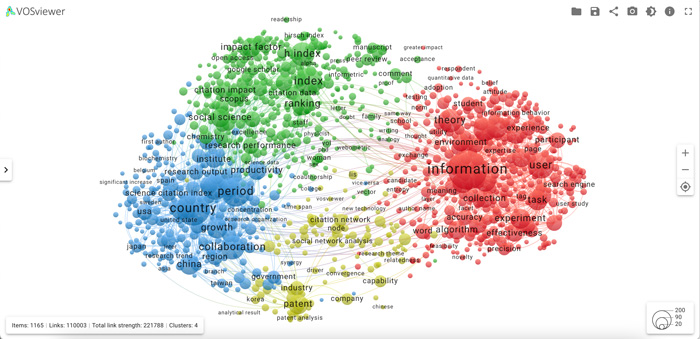
Understanding scientific research trends: The growing role of bibliometric analysis
A recent editorial outlines the increasing use and value of bibliometric analysis in academic research.
The increasing volume of research publications is corresponding with the increasing growth of bibliometric methods for tracking the development, structure, and dynamics of knowledge across various fields, according to the recently published editorial, Insights into bibliometric analyses.
What is bibliometric analysis?
Bibliometric analysis is the use of statistical and mathematical methods to analyse research publications. This involves gathering and interpreting data such as citation counts, authorship patterns, and keyword trends to map out research hotspots, collaborations, and gaps in knowledge.
Originating in the 1930s, bibliometry now incorporates modern computational techniques and visual tools to create a more comprehensive understanding of academic landscapes.

The value of bibliometric reviews
Bibliometric reviews summarise trends within specific research domains by providing insights into the evolution of academic knowledge. These reviews help researchers, institutions, and policymakers make informed decisions by identifying emerging topics, gaps in the literature, and evolving practices.
Bibliometric analysis can stand alone or be combined with other review types, such as systematic or scoping reviews, to provide a more holistic view of the field.
Advanced tools for bibliometric analysis
Modern bibliometric analysis relies heavily on software tools designed to visualise and interpret research data. Tools like VOSviewer, Bibliometrix, and CiteSpace are used to create visualisations that represent intellectual, conceptual, and social structures of research activity.
These tools allow researchers to map out co-authorship networks, co-citation patterns, and the co-occurrence of keywords, helping to visualise connections between different research areas.
Challenges in bibliometric analysis
Despite its usefulness, bibliometric analysis faces several challenges which are outlined in the editorial. For example, the accuracy and completeness of bibliometric findings depend on the quality of the databases used. Major databases such as Web of Science, Scopus, and PubMed differ in their coverage and indexing practices, which may lead to incomplete or biased results. Terminology in bibliometric reviews can sometimes be confusing, leading to inconsistencies in reporting.
The editorial emphasises the need for open access to academic publications, as unrestricted access to full bibliographic metadata is essential for ensuring more accurate and inclusive analyses.
Bibliometry as a complementary tool
Bibliometric methods serve as a complementary tool, providing additional data and perspectives that can inform research strategies, policy decisions, and academic priorities. Bibliometric tools can play an important role in helping researchers navigate and interpret vast quantities of scientific data. However, bibliometry should not replace a systematic or scoping review.
Bibliometric analysis offers a powerful, data-driven approach to understanding academic knowledge and research trends. Using advanced tools to track research activity, collaborations, and emerging fields, helps individuals and organisations make more informed decisions. To maximise the impact of bibliometric studies, open access to research publications is required.
Read more about this growing area of research go to the editorial.
Insights into bibliometric analyses
Ding, Sandrine
JBI Evidence Synthesis. 23(4):564-565, April 2025.